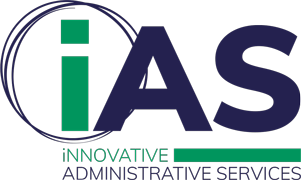5 Must-Know HR Analytics for Human Resource Managers
Human resource managers need data-driven insights to help them operate effectively. HR analytics, also known as people analytics, aids critical decision-making. With evidence-based data analytics, managers can more easily improve workforce processes, recognize top talent, and create a positive employee experience. These five forms of HR analytics are must-haves to optimize business success. First, though, here’s a brief description of HR analytics and how it works.
What is HR analytics?
Human resource analytics analyzes an organization’s human capital to improve employee retention and performance. Primarily, companies use it to aid progression and HR health. One of its main aims is to use collected data to improve HR processes.
People analytics provide the information that answers vital questions about how well HR (human resources) works. Such data reveal pertinent aspects impacting HR like employee turnover rate, regretted employee loss, and the likelihood of individual employees leaving the organization within a set time.
With these five people analytics methods, HR managers can examine informative data and use it to its best effect:
Recruitment channel analytics
Recruitment channel analytics is a vital resource for HR managers, boosting their employee selection and sourcing savvy. It measures, tracks, collates and analyzes staff data to improve hiring decisions.
As a predictive tactic, recruitment channel analytics empowers HR managers with historical data showing the potential likelihood of outcomes and improves diversity, enhances recruitment costs, and boosts employee choice quality.
Turnover (churn) rate analytics
Turnover rate analytics describe the attrition rate of employees. Human resource managers use such data to investigate factors that lead to employee retention or loss. As a predictive measure, turnover analytics takes the guesswork out of the likely number of staff an organization will retain or lose.
Structural culture analytics
Structural or organizational culture stems from a company’s collective personality, consisting of the ethos and character underlying corporate systems, patterns, and implicit rules.
Culture analytics highlights how the collective ethos of a company affects what happens within it. For example, gathered data predicts how the personal qualities of potential employees fit with the company culture; this assists the hiring process and aids talent acquisition. It also spotlights any signs of toxicity within the culture, enabling HR managers to make positive changes fast.
Leadership analytics
Workforce performance drops when poor leaders manage companies. Effective leadership, on the other hand, boosts business success. HR analytics collects data about leadership performance via ethnographic and quantitative research like online surveys or questionnaires.
The analytics data improve HR management’s leadership skills, so they handle challenges well. Most notably, it assists leaders in understanding how to increase employee engagement, which influences profit and productivity.
Employee capability analytics
Workforce analytics allows HR managers to assess staff competence. For example, they can weigh whether employees’ skills match those vital for their positions. Or, they can check if employee skill sets will benefit the company in the future.
One way to analyze workforce capability is to gather observable data via behavior, expertise, and other factors that demonstrate ability; this draws attention to the core competency within the workforce.
HR analytics are valuable tools for human resource managers, helping them understand the culture and competency of a business and its employees–collected data flags what’s happened so companies can increase the odds of positive events. People analytics expose problems before they worsen, improve acquisition, and boost effective leadership performance.





